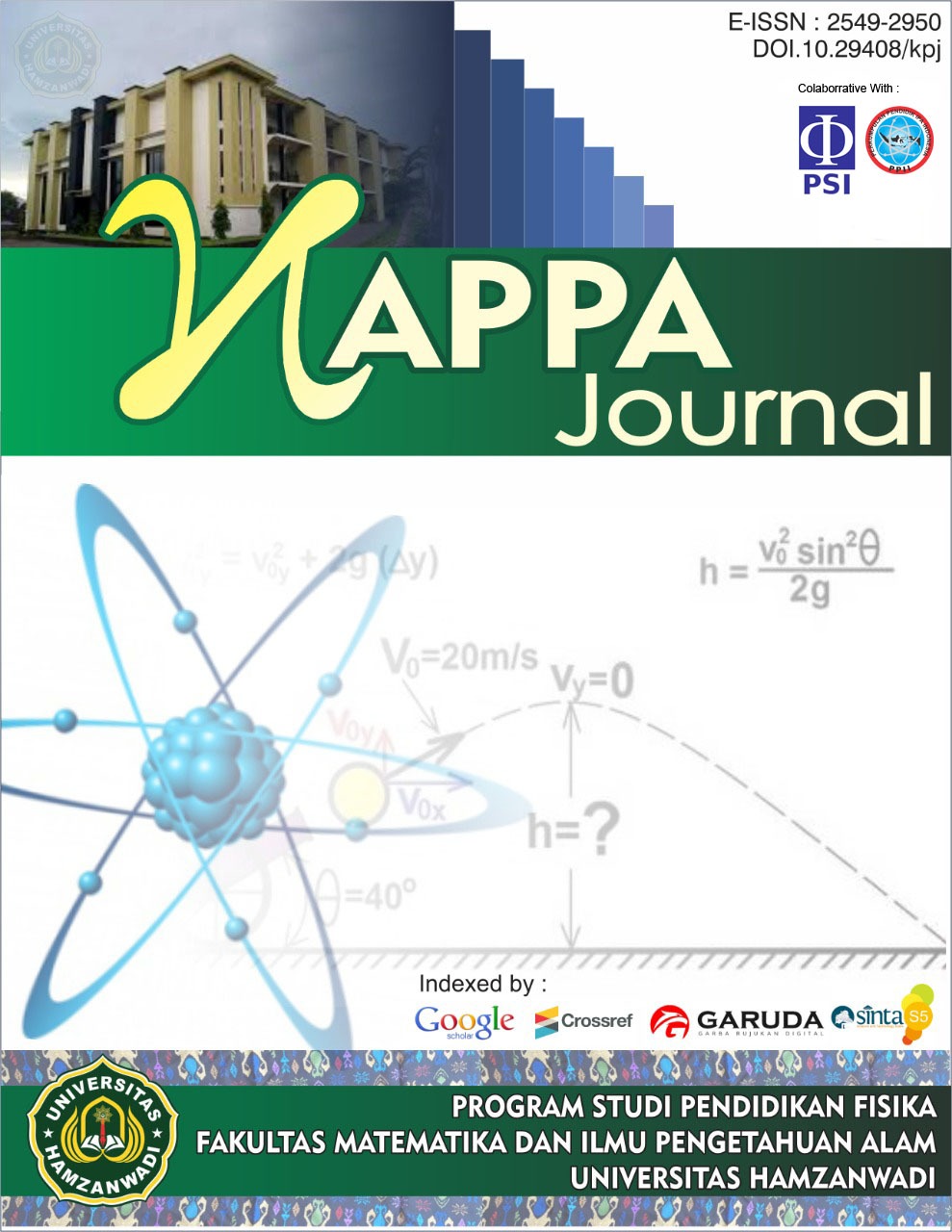Optimasi Slice Thickness dengan Nilai Signal to Noise Ratio dan Contrast to Noise Ratio untuk Meningkatkan Kualitas Citra MRI Genu
DOI:
https://doi.org/10.29408/kpj.v9i1.29591Keywords:
Genu, slice thickness, Image Quality, Signal-to-Noise Ratio (SNR), Contrast-to-Noise Ratio (CNR)Abstract
Research has been conducted on the effect of slice thickness variation on the quality of Genu MRI images. This study was conducted at the Radiology Installation of Bali Mandara Hospital using primary data from Genu MRI examination results.The independent variable in this study is the variation of slice thickness values of 3, 5, and 7 mm. There were 30 patientsmeasured and the tissues analyzed were ligament, bone, fat, and noise as background using the ROI method and the segmentation results wereresults were taken at the mean value and standard deviation in the background. The difference in SNR and CNR values due to variations in slice thickness values can be tested using the Factorial Anova test. The results of this study obtained that there is an effect of slice thickness variation on SNR and CNR values that will have an impact on the quality of MRI Genu images. The greater the slice thickness value analyzed, the greater the SNR and CNR values produced and the better the image quality. In ligament tissue, the average SNR values of 3, 5 and 7 mm are 23.830; 36.594; and 50.524, respectively. In bone tissue, 191.352; 277.399, and 344.170 were obtained. In fat tissue, SNRs of 9,460, 292,022, and 367,463 were obtained. Changing the slice thickness will directly affect the SNR. It can be seen that the higher the slice thickness value given, the higher the SNR and CNR values for each tissue evaluated and the longer the scanning time required. In the slice thickness variation.
References
Azam, M., nur, muhammad, & Damanik, A. 2005. Pengaruh Parameter Teknis Tr, Te Dan Ti Dalam Pembobotan T1, T2 Dan Flair Pencitraan Magnetic Resonance Imaging (MRI). Berkala Fisika, 8(1), 15–20.
Basiri, R., Federico, P., & Lebel, R. M. (2019). Transverse relaxometry with transmit field-constrained stimulated echo compensation. Magnetic Resonance Materials in Physics Biology and Medicine, 32(6), 669–677. https://doi.org/10.1007/S10334-019-00769-9
Fakhrurreza, M., Wahyuni, S., & Ade Nur Liscyaningrum, I. 2018. Prodi D3 Teknik Radiodiagnostik dan Radioterapi Fakultas Ilmu Kesehatan. Modul Magnetic Resonance Imaging
Firdaus, A. O., Shofiyati Rohmah, F., & Nurafina, A. C. D. 2014. Prodesur Pemeriksaan MRI (Magnetic Resonance Imaging) Kepala Pada Kasus Epilepsi Di Instalasi Radiodiagnostik RSUD Dr.Soetomo Surabaya diploma. Skripsi. Diploma III Radiologi, Fakultas Kedokteran, Universitas Airlangga.
Ghozali, I. 2016. Aplikasi Analisis Multivariete Dengan Program IBM SPSS 23. Badan Penerbit Universitas Diponegoro.
Gunawan, A. A. N.2023. Statistika Parametrik, Non Parametrik Dan Multivariat (Edisi 1). Matematika: Yogyakarta.
Kutum, N., Pegu, B. J., Kutum, T., Islam, I., & Choudhury, M. (2024). A study of the role of mri in evaluation of soft tissue tumors: a hospital based study. International Journal Of Scientific Research, 25–30. https://doi.org/10.36106/ijsr/3909391
Pazahr, S., Bhavithra, M., & Velmurugan, B. (2022). 7 T Musculoskeletal MRI. Investigative Radiology, 58(1), 88–98. https://doi.org/10.1097/rli.0000000000000896
Rafa Zenitha Azzahra, I Made Lana Prasetya, & Intan Lesmanasari. 2023. Teknik Pemeriksaan MRI Genu Dengan Penambahan Sequence Axial 3D Spoiled Gradient Recalled Echo. Jurnal Riset Rumpun Ilmu Kedokteran, 2(2). 92–108. https://doi.org/10.55606/jurrike.v2i2.1868
Raymond, C. 2022. Radiopaedia. Diambil kembali dari Spin Echo Sequence: https://radiopaedia.org/articles/spin-echo-sequences?lang=gb. Diakses 9 Agustus 2023
Rochmayanti, D., Widodo, T. S., & Soesanti, I. 2010. Pengaruh Parameter Number of Excitation (NEX) Terhadap SNR. Forum Teknik, 33(3), 166–173.
Soetikno, R. D. (2010). Imejing Molekuler Menggunakan MRI: Cara Baru Untuk diagnosis Tumor Otak Glioma. Imajing Molekuler Menggunakan MRI:Cara Baru Untuk Diagnosis Tumor Otak Glioma, 1–10.
Stanislaus, S. 2009. Pedoman Analisis data dengan SPSS. Yogyakarta: Graha Ilmu.
Stoffey, R. D., & Mizrachi, J. S. (2012). MRI in Practice, 4th ed. American Journal of Roentgenology, 198(5), W501–W501. https://doi.org/10.2214/ajr.11.8252
Thompson, J. C. (2010). Netter’s Concise Orthopaedic Anatomy (Second Edi). Elsevier Inc. https://shorturl.at/CK1wp
Weisphaut, D. 2006. How Does MRI Work? An Introduction the Physic and Funtion of Magneting Resonance Imagin. Heidelberg: Bussines Media.
Westbrook, C. 1998. MRI in Practice. USA: Blackwell Publishing.
Westbrook, C. 2011. MRI in Practice Fourth Edition. United Kingdom: Blackwell Science Ltd.
Yi, J., Hahn, S., Lee, H.-J., Lee, Y., Bang, J.-Y., Kim, Y., & Lee, J. (2024). Thin-slice elbow MRI with deep learning reconstruction: Superior diagnostic performance of elbow ligament pathologies. European Journal of Radiology, 175, 111471. https://doi.org/10.1016/j.ejrad.2024.111471
Downloads
Published
Issue
Section
License
Copyright (c) 2025 Kappa Journal

This work is licensed under a Creative Commons Attribution-ShareAlike 4.0 International License.
Semua tulisan pada jurnal ini menjadi tanggungjawab penuh penulis. Jurnal Kappa memberikan akses terbuka terhadap siapapun agar informasi dan temuan pada artikel tersebut bermanfaat bagi semua orang. Jurnal Kappa dapat diakses dan diunduh secara gratis, tanpa dipungut biaya, sesuai dengan lisensi creative commons yang digunakan








